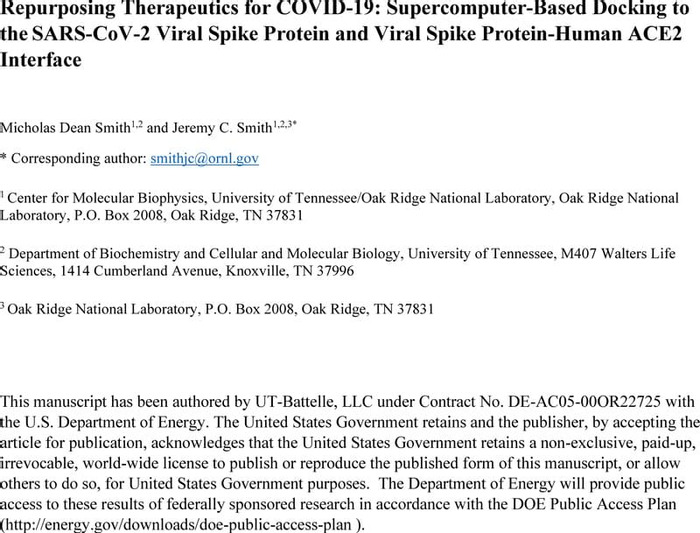Pretty neat study, but also a heavy read if you're not a biochemist or in a related field...I'll try to summarize.
A group at Oak Ridge National Laboratory (a part of the US Department of Energy) employed SUMMIT, the world's most powerful supercomputer, to simulate/analyze how certain existing drugs could be effective at disrupting interactions between the SARS-CoV-2 "spike" protein and human ACE-2, which is a receptor/membrane protein. Binding to ACE-2 is probably how the novel virus gets into a human cell; this is how SARS works and seems to be a reasonable hypothesis.
The gist of it is they found 47 lead compounds (many of which already have regulatory data/have been studied in detail before) out of the 8000+ drugs they included in their study. They narrowed the list further to seven drugs that seem most promising of all. Nitrofurantoin, isoniazid pyruvate, eriodictyol were the best at binding to human ACE-2; cepharanthine, ergoloid, and hypericin were best at binding to the "spike" protein. Either strategy could potentially disrupt the coronavirus piece interacting with the human cell piece. They also mentioned that cepharanthine and hypericin have been used as anti-viral agents against other coronaviruses previously.
Keep in mind that this was a simulation, re: not data from in vivo or even in vitro testing. But, this could be helpful in spotting trends/strategies, what to target, for vaccine candidates as human trials start to crank up soon.




Comment